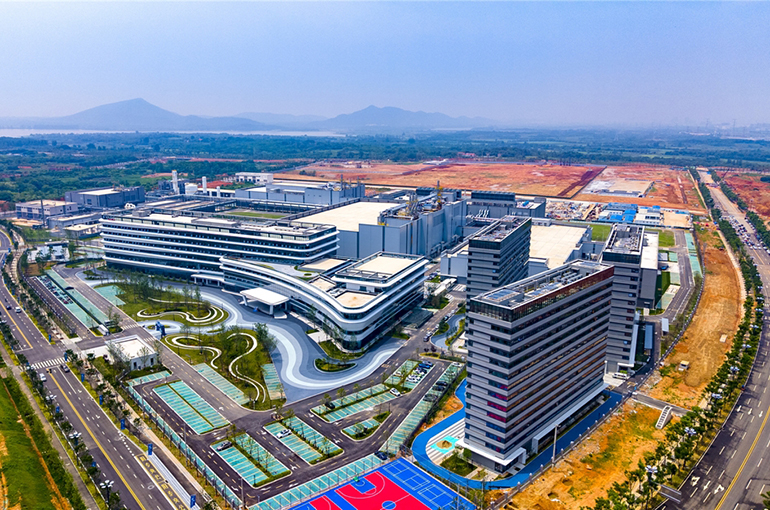 China's Largest SiC Wafer Factory Comes on Stream in Wuhan
China's Largest SiC Wafer Factory Comes on Stream in Wuhan(Yicai) May 29 -- The largest silicon carbide wafer factory in China has officially kicked off production in Wuhan in central Hubei province, according to a local media outlet.
The new production base of Anhui Yangtze Optical Fiber and Cable Advanced Semiconductor located in the East Lake High-Tech Development Zone, better known as the 'Optics Valley of China,' produced its first six-inch SiC wafer yesterday, Hubei Daily reported today.
The factory has an annual production capacity of 360,000 six-inch SiC wafers for new energy vehicles' drive systems, said Zhuang Dan, chairman of YOFC Advanced Semiconductor and executive director and president of its parent company YOFC. Once fully operational, it will be able to meet the demand of over 1.4 million NEVs a year, he added.
"Even though we have just started production, the yield of our first wafer has already reached 97 percent, which is at an internationally advanced level," said Li Gang, general manager of the factory.
The facility has been collaborating extensively with world-leading automotive companies. It will begin on-vehicle testing of a SiC wafer model next month, with nearly 10 other models under validation, he noted, adding that mass production and deliveries are expected to commence in the coming months.
Over 20 equipment manufacturers and upstream and downstream companies have established operations in the surrounding area, Zhuang explained. The factory also cooperates with Hubei Jiufengshan Laboratory and Huagong Tech, two research and development institutions in Optics Valley.
YOFC Advanced Semiconductor invested CNY20 billion (USD2.8 billion) in the SiC wafer factory, which began construction on Sept. 1, 2023.
Nearly 13.17 million NEVs were made in China last year, with the figure already exceeding 7.56 million in the first quarter of this year, placing China in an undisputed leading position globally. However, over 90 percent of the core chips used in vehicle power systems still rely on imports, according to Hubei Daily.
SiC is a semiconductor material that can operate stably under higher voltage and temperature than traditional silicon. As the charging voltage of NEVs increases and their driving range becomes longer, SiC has become a new competition point for the industry.
Editor: Futura Costaglione